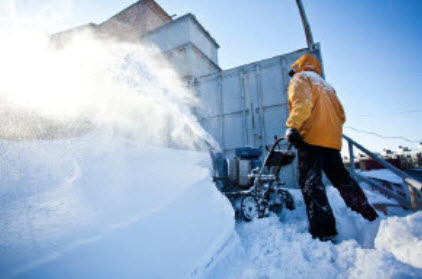 Southeastern Pennsylvania receives approximately twenty to thirty inches of snow each winter. While for most of us snow merely presents an inconvenient commute to work, it is an entirely different challenge for municipal governments across the Commonwealth. Tasked with keeping local economies moving and residents safe on shoestring budgets, municipalities are forced to make tough decisions about how, when, and where to remove snow and ice on a regular basis during the winter months. To make matters worse, nearly any miscalculation on the part of a municipality can lead to dire consequences. For instance, underestimating how much salt is needed for a given winter can strain an already thin municipal budget – PennDOT uses on average 57,770 tons of salt per winter on highways in the Philadelphia region alone. Similarly, slip-and-falls on municipal property can leave municipalities on the hook for personal injuries and expensive litigation costs.
Southeastern Pennsylvania receives approximately twenty to thirty inches of snow each winter. While for most of us snow merely presents an inconvenient commute to work, it is an entirely different challenge for municipal governments across the Commonwealth. Tasked with keeping local economies moving and residents safe on shoestring budgets, municipalities are forced to make tough decisions about how, when, and where to remove snow and ice on a regular basis during the winter months. To make matters worse, nearly any miscalculation on the part of a municipality can lead to dire consequences. For instance, underestimating how much salt is needed for a given winter can strain an already thin municipal budget – PennDOT uses on average 57,770 tons of salt per winter on highways in the Philadelphia region alone. Similarly, slip-and-falls on municipal property can leave municipalities on the hook for personal injuries and expensive litigation costs.
If an alleged snow or ice slip-and-fall does happen, it is important for municipalities to know that a recent Commonwealth Court decision, Moon v. Dauphin County, reaffirmed that liability will not be imposed for injuries sustained when a claimant only produces evidence that the snow or ice caused the accident but does not produce evidence that a design or construction defect of the municipality’s property itself was the cause. In Moon, the plaintiff claimed he sustained injuries due to a fall on ice while walking on County property. Generally, although the care, custody and control of real property in the possession of a municipality can subject it to liability for accidents on the property, the Court’s decision reaffirmed that liability will not be imposed as a result of a municipality’s failure to remove snow and ice from its property. Rather, the municipality may only be liable if the snow or ice on its property “is there because of a design or construction defect.” Since the plaintiff did not establish a design or construction defect of the County’s property, the Court Dismissed all claims against the County.
Like most areas of municipal governance, knowing your obligations and having a solid game plan in place prior to being faced with tough decisions goes a long way to curing those winter blues.
Preparedness is Key
- Develop a snow and ice removal plan that prioritizes high-volume arterials
- Adopt parking restrictions and snow emergency ordinances to limit travel during hazardous weather events
- Adopt snow removal ordinances that assign sidewalk maintenance responsibilities to property owners
- Set aside a full season’s worth of materials prior to winter if possible.
During the winter months, municipalities can also proactively undertake anti-icing, pre-wetting, and the application of treated materials prior to expected storm events or employ computerized dispensing systems, weather forecasting services, or pavement temperature detection equipment to stay ahead of precipitation.
______________________________________________________________________________
Christopher P. Allen, Esq. is an Associate attorney at Siana Law. Visit the link below to learn more about the author of this post.
All rights reserved. This publication may not be reproduced without the express written permission of Siana Law. This publication is designed to provide general information relating to the covered subject matter. None of the information is offered, nor should be construed, as legal advice. Although prepared by professionals, the materials contained in this publication are not intended to be utilized as a substitute for obtaining legal or other professional advice. We encourage you to obtain legal or other professional guidance regarding those specific matters for which you require assistance.


